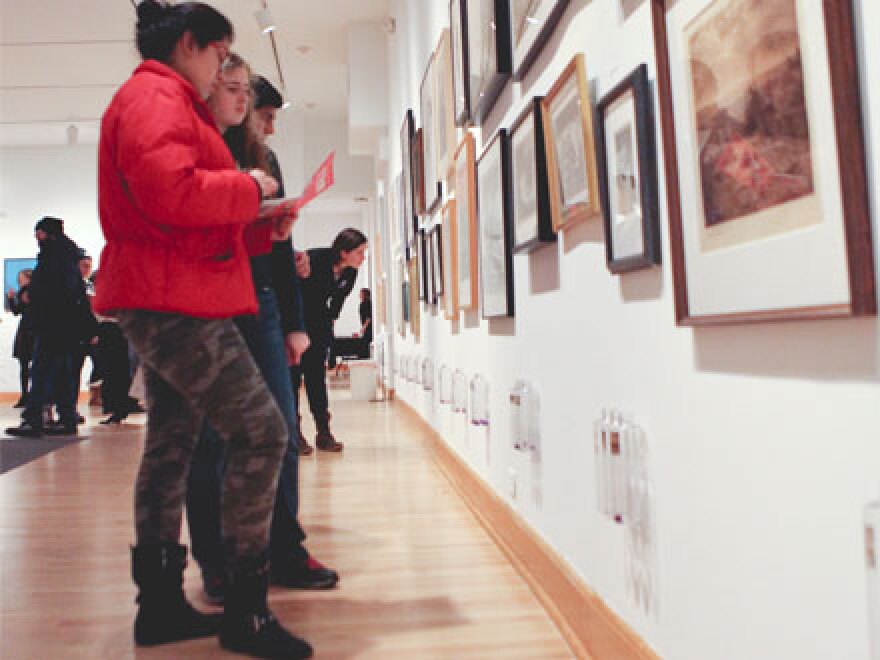A new program at Williams College allows students to strip the walls of the campus art museum.
Carolina Jaramillo is a sophomore studying biology, philosophy and chemistry at Williams College.
“I can’t say that I came into Williams expecting some opportunity like this,” Jaramillo said. “When I did hear about it, it was very exciting and I jumped at the opportunity to do it.”
The opportunity she is talking about allowed her to walk into the Williams College Museum of Art, blatantly take a 3-foot-tall, 17-pound piece of art off the wall, walk to her dorm and put it up on her wall. This means that for the rest of the semester Jaramillo is the proud caretaker of late 19th century lunar photography.
“To be honest, it’s kind of bizarre to have it in my room,” she said. “I spend a lot time wondering what these photographers would have thought if they knew that it ended up in some college student’s dorm.”
Rightly so, the program is called WALLS, or Williams Art Loan for Living Spaces. Christina Olsen is the museum’s director. She says the idea came from similar projects at Brandies University and MIT.
“The reasons that works of art go into institutions and museums is because they’re going to the public,” Olsen said. “They are held in the public trust, but the public doesn’t always get that. A program like this really makes that very, very real for people. These works of art, these 90, belong to the student body.”
To kick off the program, 45 students lined up in the cold on a Sunday morning in February to guarantee they’d get their hands on one of the 90 pieces of art up for grabs. Some were there as early as 3 a.m. Freshman Wilfred Guerron says once inside the museum, temperatures quickly spiked as one by one students canvassed the gallery and took the artwork they desired…regardless of how the remaining audience felt.
“You just have to look at people who could possible take the one that you want,” Guerron recalled. “You just tense up and you feel very emotional if they do. I remember the first one that I really wanted was one of the first five to get picked. I felt sad even though I have no ownership over the piece of work, but I was like “No! That was mine! No!”
More than 120 students signed up to be placed in a lottery for the remaining 45 pieces of art, which date back to 1518. Olsen says she was excited to see one of the museum’s galleries completely emptied out, considering the entire museum has more than 13,000 works of art.
“You look at a work again and again,” Olsen said. “You look at it when you’re excited and happy and studying. You look at it when you’re depressed. You look at it when you’re waking up. You look at it when you’re going to bed. That’s a fundamental shift. One of the things that I think we know about art is that it takes time. You go to a museum and people spend maybe a minute in front of a work of art. But art takes time.”
Jaramillo says the artwork hanging on her dorm room wall is doing just that.
“It kind of demystifies the whole art-museum notion of interacting with art in a purely academic setting, a very serious way, a very formal way,” Jaramillo said. “I think you’re bringing it into your room where you spend more casual time. I think it engages you in a less structured way. It kind of bleeds into your life in a way that you don’t really notice it. A much more organic way. I think that’s what the program was meant to do and I definitely feel it happening.”
Jaramillo says it’s interesting to think about the artists’ intentions for the pieces of art being used in the program.
“Sometimes what isn’t even meant to end up in the museum will end up in the museum,” she said. “And things that are maybe meant for museums end up in dorms.”
The museum plans to continue the program next fall.







